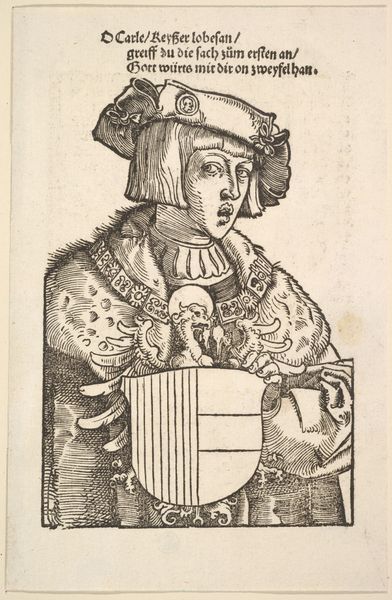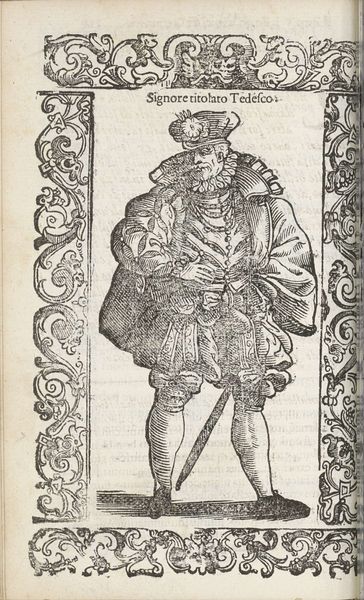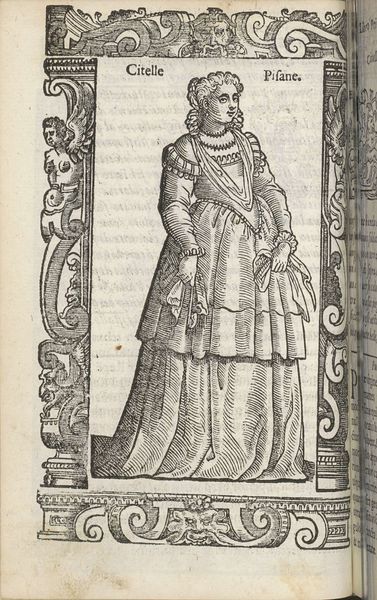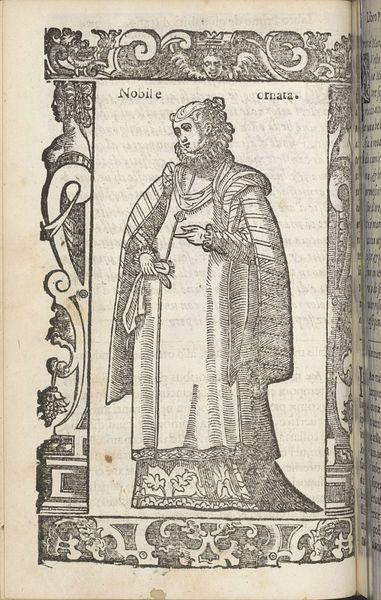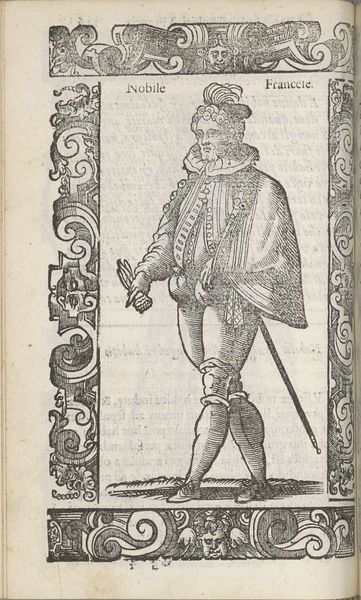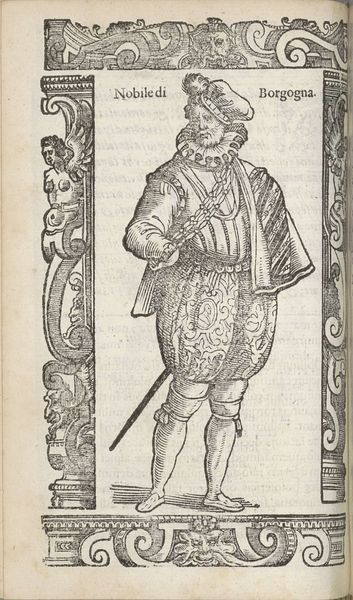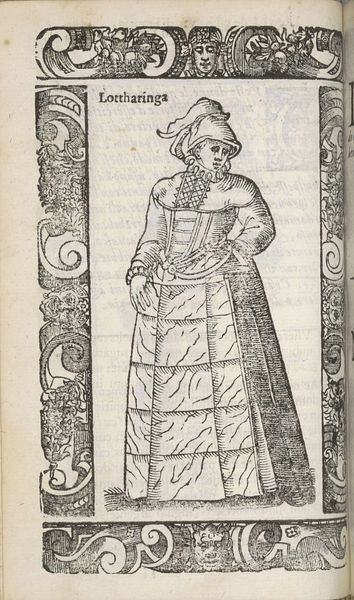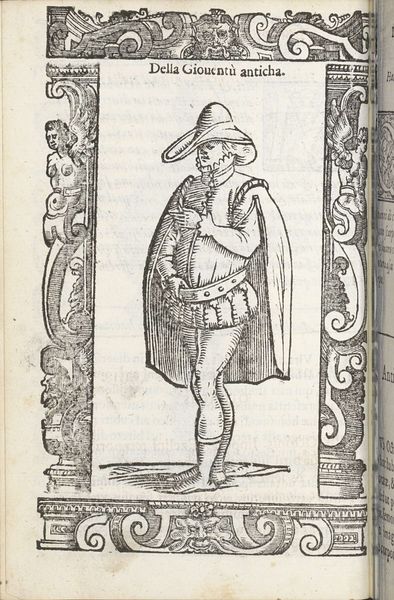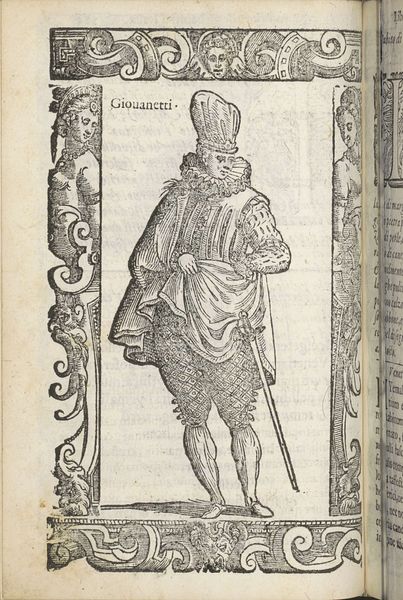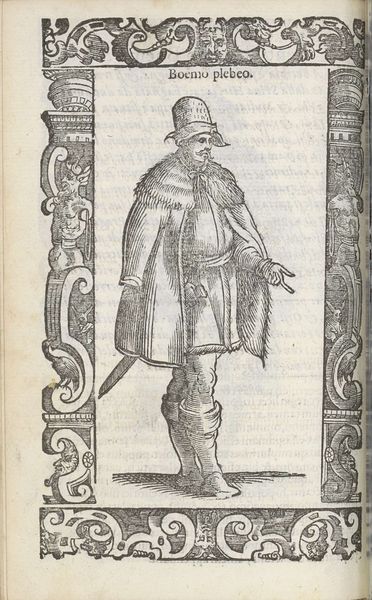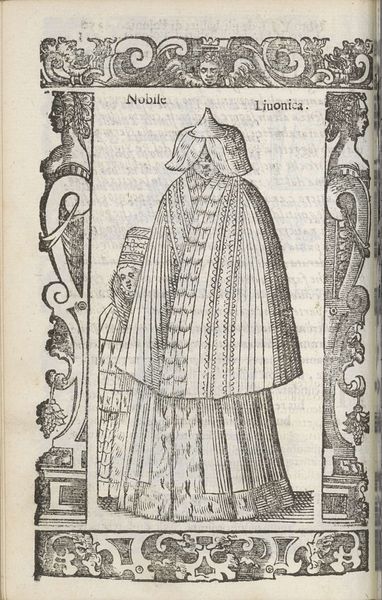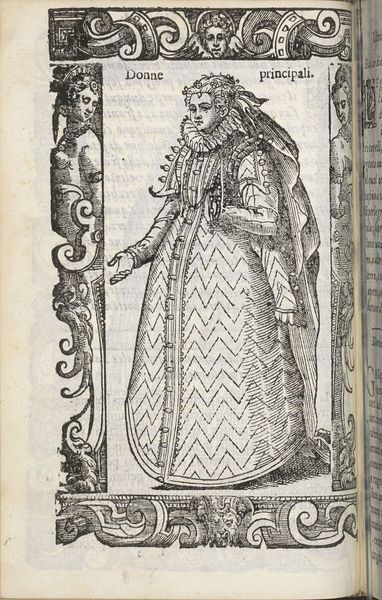
drawing, print, engraving
#
portrait
#
drawing
# print
#
figuration
#
11_renaissance
#
line
#
history-painting
#
northern-renaissance
#
engraving
Dimensions: Overall: 8 1/8 x 5 9/16 x 3/16 in. (20.7 x 14.2 x 0.4 cm)
Copyright: Public Domain
Curator: Here we have a Northern Renaissance print, dating back to 1519: *Libertas Germaniae,* attributed to Hieronymus Gebweiler. It’s an engraving, likely part of a larger book. My first impression? Stark and imposing. The sitter, likely a member of royalty given the heraldic crest and attire, is given to us with fine lines on laid paper, there’s a formality and distance that seems so appropriate for the period. Editor: It is more than appropriate; it’s deeply purposeful. Think about what ‘Libertas Germaniae’ means at this historical juncture: Charles V had just become Holy Roman Emperor. This print exists within a landscape rife with political anxieties and nascent nationalist sentiment. The clean lines, almost austere presentation, signal not just the subject's status but a broader call for German freedom against imperial power. The very materiality, the act of carving this image and printing it for wider distribution, feels like an act of cultural resistance, and should make us ask ourselves which materials are most crucial to counter-power. Curator: It’s compelling to see the role that printmaking takes here, both as an artisanal process and a powerful method to mass produce potentially seditious images. The act of taking raw materials like ink and paper and producing a powerful symbol of nationalism should not be glossed over. Editor: Precisely. We must read into these visuals and appreciate their construction within social history. Charles’ Habsburg control certainly had wide social ramifications that called on new senses of cultural identity for Germans; here we witness the material culture of this re-asserted identity being constructed. Curator: So, the “Libertas” isn’t just about political freedom but also about the ability of German artists and printers to forge a cultural identity through their work and its distribution. Editor: Absolutely. The seemingly rigid formality in the print speaks volumes. It is less a detached record and more an articulation of power struggles in Renaissance Germany. Curator: Looking closer, you can also discern the detail in the fur trim of the sitter’s robes, or the minute texture of his cap – each tactile quality serving to enhance the perception of this as a valuable political symbol. Editor: These very physical components—paper, ink, and their detailed use—show the period’s consciousness surrounding identity, and it’s still visible centuries later in how its makers carefully curated their historical image through their creative processes and consumption of material. Curator: To me, appreciating the print lies in grasping both the labor and historical tensions inherent to it. Editor: Agreed. Reflecting on Libertas Germaniae allows us to examine power, identity, and resistance – but also reminds us of the critical social role that we can see in every element of its making.
Comments
No comments
Be the first to comment and join the conversation on the ultimate creative platform.
